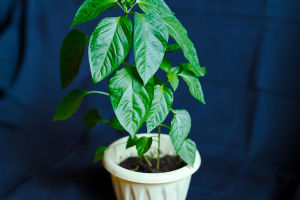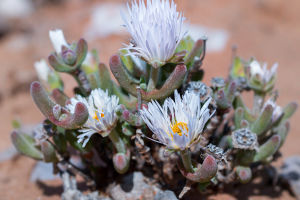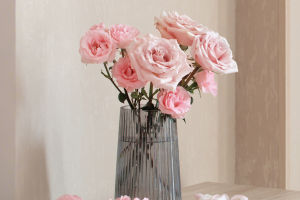Have you ever walked into a room and instantly felt energized by the vivid splash of red from a single plant? That's the magic of the flamingo flower, also known as Anthurium.
This tropical beauty is more than just a colorful ornament—it's a mood enhancer, a long-lasting bloom, and a design statement rolled into one.
Let's take a closer look at why Anthurium stands out among indoor plants and how it can add a touch of exotic flair to your everyday life.
Striking Appearance That Commands Attention
The flamingo flower's most obvious trait is its bold, bright red "petal," which is actually a modified leaf called a spathe. This spathe curves gracefully, resembling the feathers of a flamingo—hence the name. Nestled within this fiery red embrace is the spadix, a yellow or white spike that forms the heart of the flower.
The contrast of these colors creates a dramatic visual effect that can instantly lift the look of any space.
Visual impact that's hard to ignore
This plant's shape and color are designed to attract pollinators in the wild, but indoors, they serve as a natural centerpiece. Unlike many plants that rely on subtle hues, Anthurium boldly declares its presence with a fiery splash that grabs the eye and refuses to let go.
Long-lasting Beauty for Busy Lifestyles
One of the most practical benefits of the flamingo flower is its extended blooming period. While many flowers fade within days, Anthurium blooms can last for weeks, sometimes even months, providing a steady source of color without frequent replacements.
This durability makes it ideal for people who want low-maintenance indoor greenery with high visual payoff.
More than just looks: A resilient performer
Its resilience isn't just about longevity. Anthurium can thrive in moderate indoor lighting and doesn't require constant watering, which means it suits a variety of home and office environments. Whether you're a seasoned plant parent or a beginner, this flower fits into your routine effortlessly.
Boosting Mood and Air Quality
Beyond aesthetics, indoor plants like Anthurium contribute positively to our well-being. Studies by environmental psychologists suggest that the presence of vibrant plants can reduce stress, increase productivity, and improve overall mood.
The flamingo flower's bright red tones stimulate energy and alertness, subtly influencing the atmosphere of a room.
A natural air purifier
Additionally, like many houseplants, Anthurium can help filter indoor air pollutants. Though not a replacement for modern air purifiers, its presence supports a fresher, cleaner environment, enhancing your living or working space.
Care Tips for Thriving Anthurium
If you're considering bringing this tropical beauty home, here are some key points to ensure it flourishes:
1. Lighting: Prefers bright, indirect sunlight. Direct sun can scorch the leaves, while too little light can reduce flowering.
2. Watering: Keep the soil moist but not soggy. Overwatering can lead to root rot, while drying out slows growth.
3. Humidity: Thrives in humid conditions. Misting leaves or placing near a humidifier can help mimic its natural environment.
4. Temperature: Prefers temperatures between 65–80°F (18–27°C). Avoid cold drafts or sudden temperature changes.
5. Feeding: Use a balanced liquid fertilizer every 6–8 weeks during the growing season to promote blooms.
Why Choose Anthurium for Your Space?
In a world full of plants, why does the flamingo flower hold such a special place? It combines striking beauty with ease of care, longevity, and subtle health benefits. It's more than decoration; it's a living mood booster that demands attention and rewards with its exotic charm.
Next time you want to refresh your room or office, consider Anthurium not just for its looks but for the way it transforms the atmosphere—bringing warmth, color, and life with minimal fuss.
Have you ever experienced the charm of a flamingo flower? What's your favorite way to brighten your indoor space? Share your thoughts and stories—let's celebrate the small joys that plants bring into our lives.


